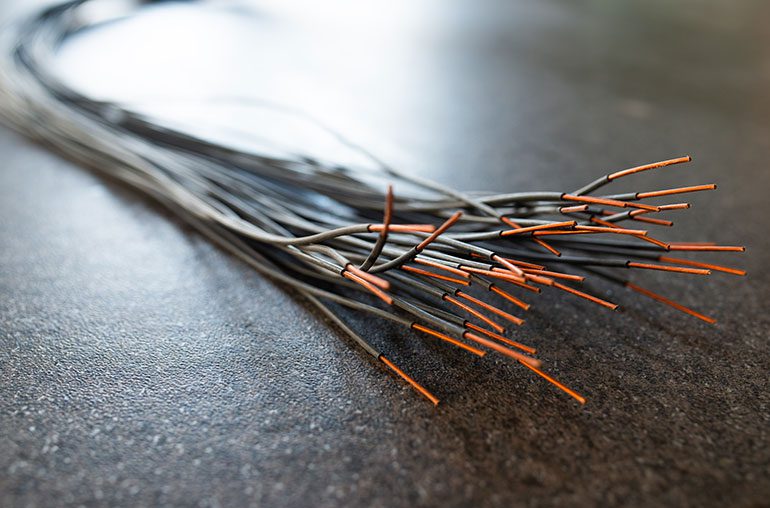
Why Companies Depend on Plain Old Telephone Services (POTS)
What is POTS? Plain old telephone services, or POTS, have been around in some form since 1876. By the mid-2010s, many businesses began taking steps to reduce dependency on analog POTS, partly due to the mass migration to VoIP and partly due to the FCC’s decision to deregulate copper lines leading to major carriers pulling back support of their vast network of aging copper phone lines.
Organizations began by moving whatever they could to alternative technology, such as DID on the PRI, eFax, SIP, or IP-based technology. However, some services were not a good fit for VoIP and remained reliant upon POTS. Services requiring an analog connection remained on POTS phone lines (including some required by law), such as fax, alarm, point of sale, and elevator lines.
By 2021, for the average enterprise, much of their remaining POTS billing was for business-critical voice and fax services without a reliable alternative.
Why Are POTS Lines Going Away?
POTS lines going away raises a lot of questions and issues, especially for most businesses that rely on them for communication. For one, can you still get a POTS line, and if so, should you? After decades of seemingly reliable service, you may wonder what’s driving this massive change. Let’s take a closer look at the decision by the Federal Communications Communication (FCC), POTS lines going away, and the primary reasons why they’re being phased out.
FCC Phase Out
When it comes to the reasons surrounding POTS lines going away, the FCC started phasing them out due to a number of disadvantages and challenges. This shift was significantly influenced by regulatory changes, including FCC Order 15-97, known as Technology Transitions, which permitted incumbent local exchange carriers (ILECs) to begin phasing out analog phone lines, provided they issued a minimum 180-day notice to customers.
The process accelerated with FCC Order 19-72, which eased the retirement of copper infrastructure by lifting ILECs’ obligations to offer unbundled copper loops and discounts on copper resale POTS lines.
The FCC recently issued four new orders designed to reduce regulatory barriers that have hindered telecommunications providers from upgrading outdated copper networks to modern, high-speed infrastructure. These changes include waiving the requirement for providers to offer stand-alone voice service alternatives when retiring copper, allowing them to offer bundled options instead. Costly notice requirements have also been waived, further expediting the process.
Expensive
Cost is another key driver for customers to move away from copper POTS lines. Maintaining copper plants to support POTS lines is costly for service providers, and these costs are passed along to customers. For a business, POTS lines can cost over a thousand dollars per month in some parts of the country. Considering that millions of business POTS lines are currently in use; this change could amount to huge savings for businesses across every industry.
Environmental Factors
In addition to higher prices, environmental factors are also critical. Since the copper network has been around for many years, POTS lines are susceptible to disruptions, such as moisture, natural disasters, and theft. When a copper phone line is down, it stays down until repaired.
Lack of Monitoring Abilities
Digital communication solutions offer greater monitoring capabilities compared to analog phone lines. Monitoring a physical infrastructure like POTS lines is difficult, which can lead to delays in identifying issues and failures with a line. A digital managed network offers comprehensive monitoring and control. With POTS replacement solutions, visibility into device usage, connectivity, and performance are readily monitored.
Digital Transformation
Copper-based POTS lines are limited in their ability to support multiple voice and data applications. This severely limits their use in a world where multi-channel communications using video and digital data are commonplace. Newer technologies are more efficient and flexible with features and capabilities that copper-based POTS simply cannot match—making the transition away from copper-based POTS lines a part of a broader digital transformation.
There are many options for replacing POTS: VoIP is a popular choice, allowing you to make calls over the internet. Some businesses are abandoning landlines altogether, opting for mobile phones and cellular networks. Businesses also consider fixed wireless, cable, or fiber options. Many companies have already transitioned their “traditional voice” service to hosted PBX, Unified Communications, and Web Real-Time Communication (WebRTC) for in-browser voice and video. However, POTS lines are about more than just voice. Specialty lines, such as elevator lines, fax lines, burglar and fire alarm circuits, and fax machines still utilize POTS. These specialty lines are essential and costly for organizations, making their reliability crucial.
The Impact of POTS Lines Going Away
As with any big change, the effects of the decision will continue to be felt across the country. Here are some ways the FCC POTS line sunset will affect businesses.
Increased POTS Line Costs for Customers
The most immediate effect of retiring copper-based POTS lines is increasing costs for lines still in use. Month-to-month rates for POTS lines have skyrocketed in the last eight years. In some states, business POTS lines alone cost over $1,500 per month. Ultimately, subscribers who insist on staying with POTS services will continue to see their bills trend higher.
Decreased Service of Existing POTS Lines
As carriers retire their copper POTS lines and turn their attention elsewhere, Service Level Agreements on POTS are disappearing. This translates to longer installation and repair times. Voice quality can also suffer as carriers dedicate less time and effort to maintenance.
Product Withdrawals
With copper networks being retired, carriers are steadily sunsetting services on their copper networks other than POTS, such as ATM, T1, and DS0. Subscribers who don’t migrate in time could see their communication disrupted.
One prominent example of this is AT&T. The legacy telecommunications provider recently signed an $850 million deal with real estate developer Reign Capital, selling 74 buildings that currently house copper networks, which power POTS. AT&T has been moving towards more modern communication options but still offers some POTS services to a small percentage of customers. The company will lease back some of the old copper equipment to continue providing these services, but AT&T’s POTS service is unlikely to last forever.
Three Reasons It’s Time to Replace Remaining POTS Lines
1. Cut costs by cutting copper.
While the concept of POTS might be simple, sending signals over a wire, the infrastructure required to support this process is complex. Calls made over POTS lines travel between multiple locations on a grid, comprised of mechanical buildings and components like copper lines. This aging physical infrastructure, susceptible to weather-related outages and frequent repairs, requires investment from carriers, which they pass on to customers. But digital is less expensive. MetTel sees an immediate average reduction of 30% in costs when clients migrate their POTS lines to a digital alternative solution.
2. The days of POTS are numbered.
The complexity and cost of maintaining POTS infrastructure has led carriers to create plain old telephone services exit strategies. In the past several months, major carriers like AT&T and Lumen have announced they are grandfathering their copper POTS lines, a precursor to copper retirement. Many business-critical services such as fax lines, alarms, point of sale terminals, and elevator call buttons still rely upon POTS, leaving organizations to find alternative solutions. Without a POTS transformation plan, hospitals may be left with unreachable fax machines, office towers without elevator emergency lines, and retailers without burglar or fire alarms to protect their locations.
3. A reliable POTS alternative for all services.
So, what are the next steps to consider if you’re ready to make the switch? Luckily, there’s a reliable POTS alternative. MetTel has built an innovative solution, POTS Transformation, to completely transform all traditional phone lines for voice and data services previously supported by plain old telephone services. MetTel has more enterprise and government POTS Transformation deployments in the US than any other provider.
Benefits of POTS Line Alternatives
With analog phone lines going away, now is the time to switch to a POTS line alternative, such as MetTel’s POTS Transformation. These services offer powerful benefits for both government and businesses.
- Cost savings: MetTel’s POTS Transformation service saves customers up to 30%.
- Fewer outages: Modern POTS alternatives are easier for providers to install and maintain, and they come with built-in redundancies. This means you’ll experience far fewer service outages.
- Advanced technology: Many POTS alternatives, including our POTS Transformation, come with internet connectivity, resulting in faster, more user-friendly communication.
- More reliable maintenance: MetTel offers 24/7 monitoring and backup to help address any challenges you might have. This advanced level of service isn’t always possible with old POTS lines.
Overall, POTS line alternatives enhance the experience for you and your customers and are more efficient for telecom providers, creating a win-win for everyone.
How MetTel Helps Companies with POTS Replacement
We understand that POTS lines going away can feel overwhelming, especially if you’ve used this legacy service for years. That’s why we offer a turn-key solution to help you make the transition.
MetTel’s POTS in a Box technology plugs into your existing infrastructure—no complex installation process is necessary. POTS Transformation devices come with dual-SIM fail-over protection and can connect to the internet using broadband, ethernet, wireless and more.
You’ll get reliable wireless connectivity, with ongoing support and management to help you at every step. Contact our team to learn more about replacing your POTS lines.
MetTel hosted a webinar highlighting the technology at the heart of POTS Transformation. The on-demand webinar is a great way to learn more about the MetTel POTS Transformation network, the deployment and installation process, and technical specs. Plus, we discuss real-world results, including a case study from a healthcare client who saw a 40% savings from the POTS migration to MetTel’s solution.


